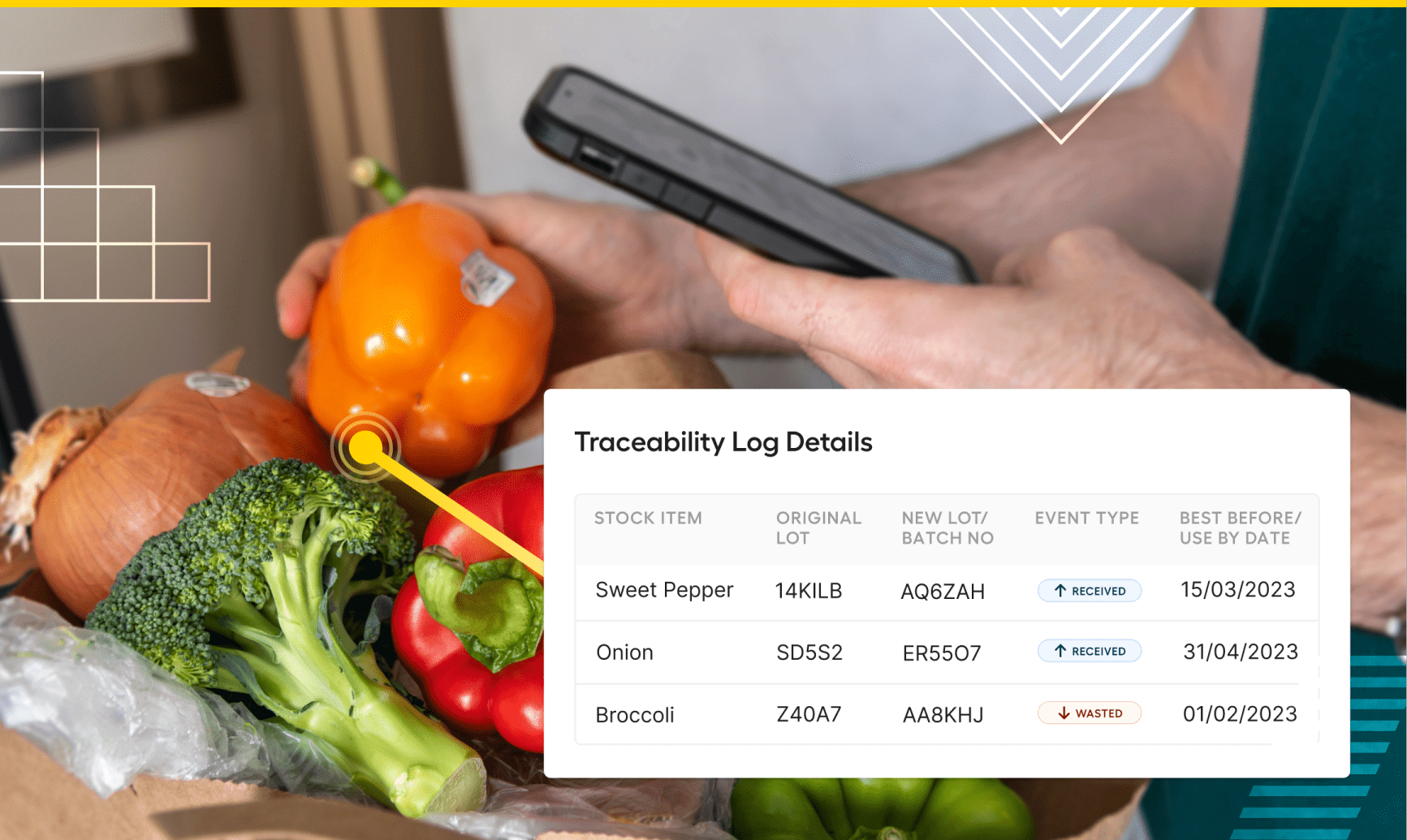Food traceability is compulsory for many food companies in the US, Europe, and the UK. These businesses are accountable for any safety issues in their supply chain and must have information on traceability for the goods they grow, distribute, and sell.
But that’s not the only reason why food traceability has gone mainstream. The demand for food safety and transparency has been skyrocketing over the past few years. In addition, consumers have grown more concerned about the food they eat, where it comes from, and which nutritional values it offers.
The increasing number of multi-site restaurants and food service companies with centralised production kitchens also increases the importance of traceability. And that, in turn, drives more interest in food traceability software.
This post outlines food traceability, why it matters, who it is for, and how to efficiently track ingredients across the entire supply chain without adding to your employees’ workload.
Here’s what we’ll cover:
- What is food traceability?
- Which companies need to comply with traceability regulations and why?
- What are the benefits of implementing food traceability?
- How technology can help you meet traceability requirements
- What are the food traceability regulations in your country?
- Types of traceability
- Conclusion
- Automate food traceability with Apicbase
Let’s start with a quick primer on traceability.
What Is Food Traceability?
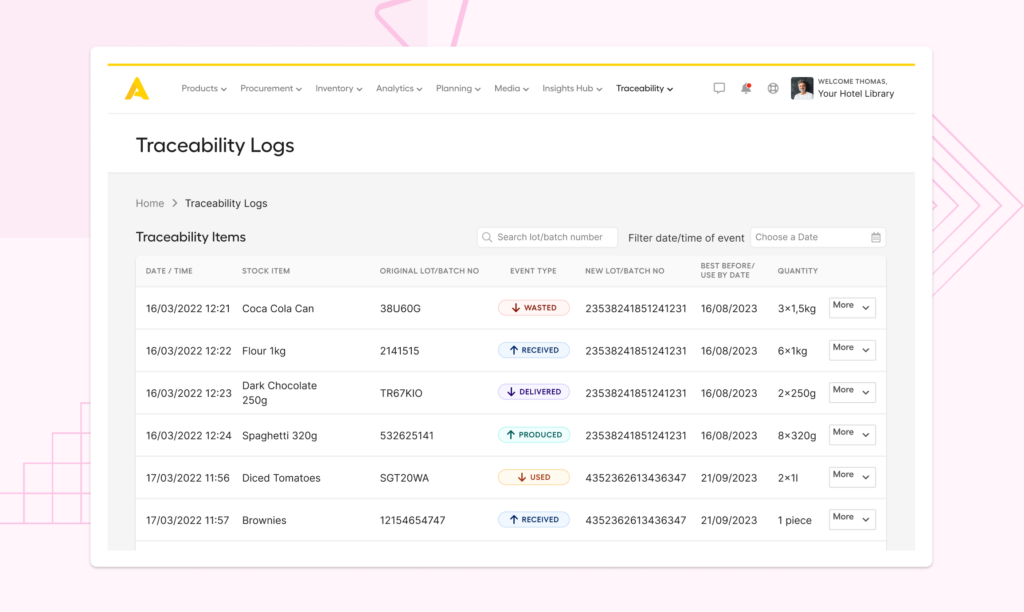
Food traceability is an F&B company’s ability to track the food products they sell, produce, and distribute across the supply chain. That means you can follow the movement of any product through all the steps in the supply chain, both backward and forward – from the product’s origin until it ends up with the consumer.
Food traceability helps food production companies mitigate and manage supply chain risks, like food contamination or outbreaks of foodborne illnesses. In those cases, tracing your ingredients enables you to find the source of contamination, recall the affected products quickly and efficiently, and reduce (or even avoid) food poisoning outbreaks.
The more information you have about the food items in your production, processing, and distribution chains, the easier it is to control these risks. Therefore, food traceability doesn’t just keep consumers from getting sick, but it also saves money and time.

Which Companies Need To Comply With Traceability Regulations And Why?
Any restaurant can benefit from solid traceability processes. However, food traceability is mandatory for all businesses that produce packaged food not intended for local consumption. That includes both finished and semi-finished products.
Regulations can vary depending on your location. It is recommended to check what the legislation says about your specific situation.
(Corporate) catering companies
Catering kitchens prepare food on-site and then distribute batches to external customers, such as large businesses, hospitals, museums, airports, etc.
Other catering companies cook in a central production kitchen, distributing meal components or (semi-)finished dishes to different outlets and retailers. Just think about a pasta restaurant chain that delivers its signature sauces to various shops, dark kitchens, or supermarkets.
Central Production Units (CPUs)
Today, many multi-property restaurants work from a central production unit or CPU. This kitchen prepares large batches of food and distributes it to franchise restaurants, business-owned locations, or retail customers.
For instance, a large bakery franchise typically uses its CPU to prepare and distribute the dough for all its baked goods.
Virtual brands
Virtual brands that have entered a host kitchen partnership also distribute semi-finished products to their restaurant partners, who have to add the final touches to finish and serve these dishes.
Another example is a virtual brand that runs multiple locations, using a CPU to distribute meal components, such as sauces or sides, to the different production kitchens.
What Are The Benefits Of Implementing Food Traceability?
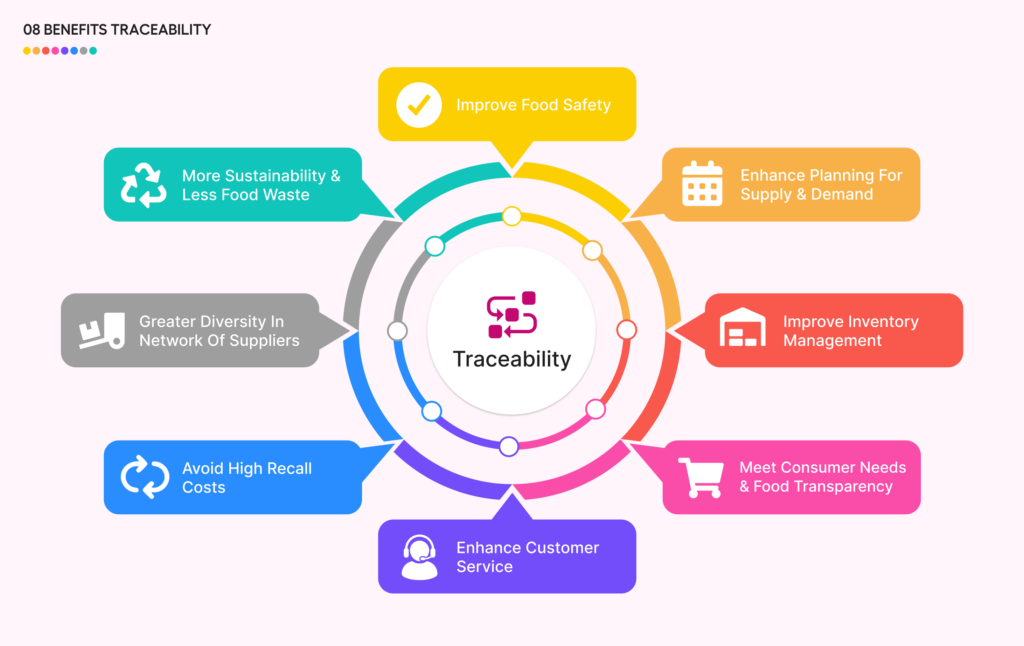
The most obvious benefit of food traceability is that it helps you quickly identify food safety problems, mitigate risks and avoid huge recall costs. This, in turn, enables you to be more resilient to issues with public health outbreaks.
But there are many more advantages for food-service businesses that take the time to set up a traceability strategy and systems to support it.
Traceability allows you to:
- improve food safety;
- avoid high recall costs;
- enhance your planning for supply and demand;
- improve inventory management;
- meet consumer needs and the demand for food transparency;
- enhance customer service;
- verify ingredients’ harvest date and location;
- improve the efficiency of your network of suppliers;
- focus more on sustainability and reducing food waste.
As a result, you can strengthen your brand reputation, improve customer loyalty, and avoid recall costs.
That’s why it’s crucial to invest in traceability systems that make it easy to comply with local regulations (without manually managing traceability data!).
How Technology Helps You Meet Traceability Requirements
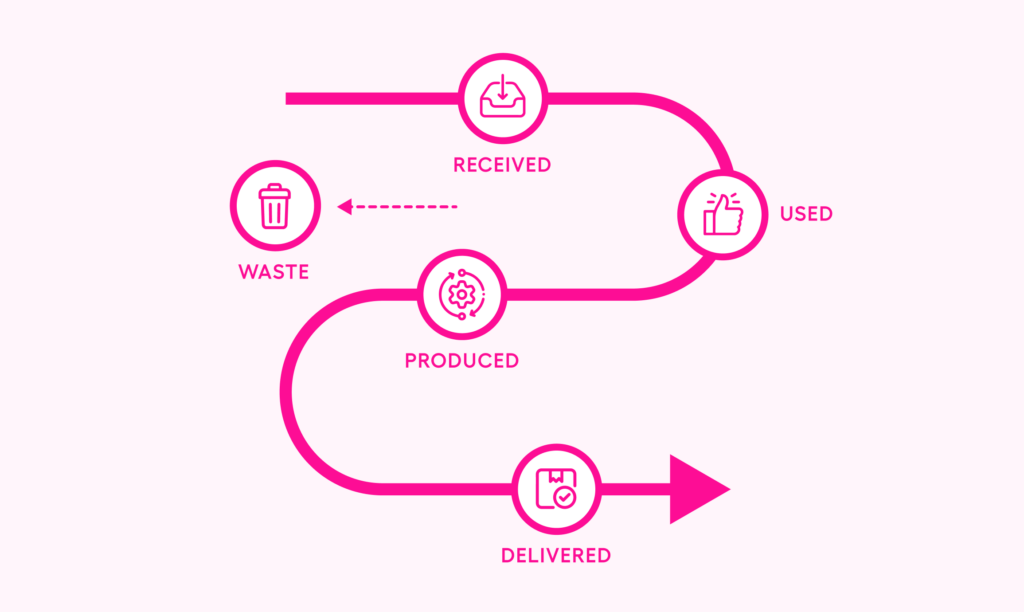
When the production levels in your kitchens increase, so do the number of products that enter and go out of your kitchen daily. Unfortunately, that makes inventory management and purchasing much more complex and time-consuming.
In fact, it becomes almost impossible to comply with food traceability regulations without having a dedicated team.
But even if you have such a team, it’s not feasible to manually keep track of all your food items in an Excel sheet or using a clipboard.
That’s where technology comes in. It allows you to unburden your employees and automate food traceability. With the right tools, your staff only needs to scan the ingredients. Then, they are automatically linked to a specific batch and customer.
Next to the massive time gain, technology comes with another advantage. It aggregates all traceability info into one digital system, making it easier to look up products, batches, and ingredients and check their statuses.
What should you look for in a traceability system?
When considering food traceability software, it’s vital to look at its scalability. You want your system to be able to grow along with your operation.
The ideal solution creates an end-to-end overview of your entire supply chain, even for large-scale production. That means you get full visibility: from when an ingredient arrives to processing and delivery to the end consumer.
Another must-have is automatic product logging and easy access to real-time statuses, saving you time and eliminating the risk of human error.
Additionally, one of the essential features you should look out for is the generation of traceability records throughout all the different stages of the production process:
- When receiving a supplier delivery;
- at the start and finish of a production cycle;
- when repackaging;
- for food waste management;
- for customer distribution.
Some software platforms offer user logging info and a high-speed thermal printer for easy, large-scale labelling.
Example: food traceability with Apicbase
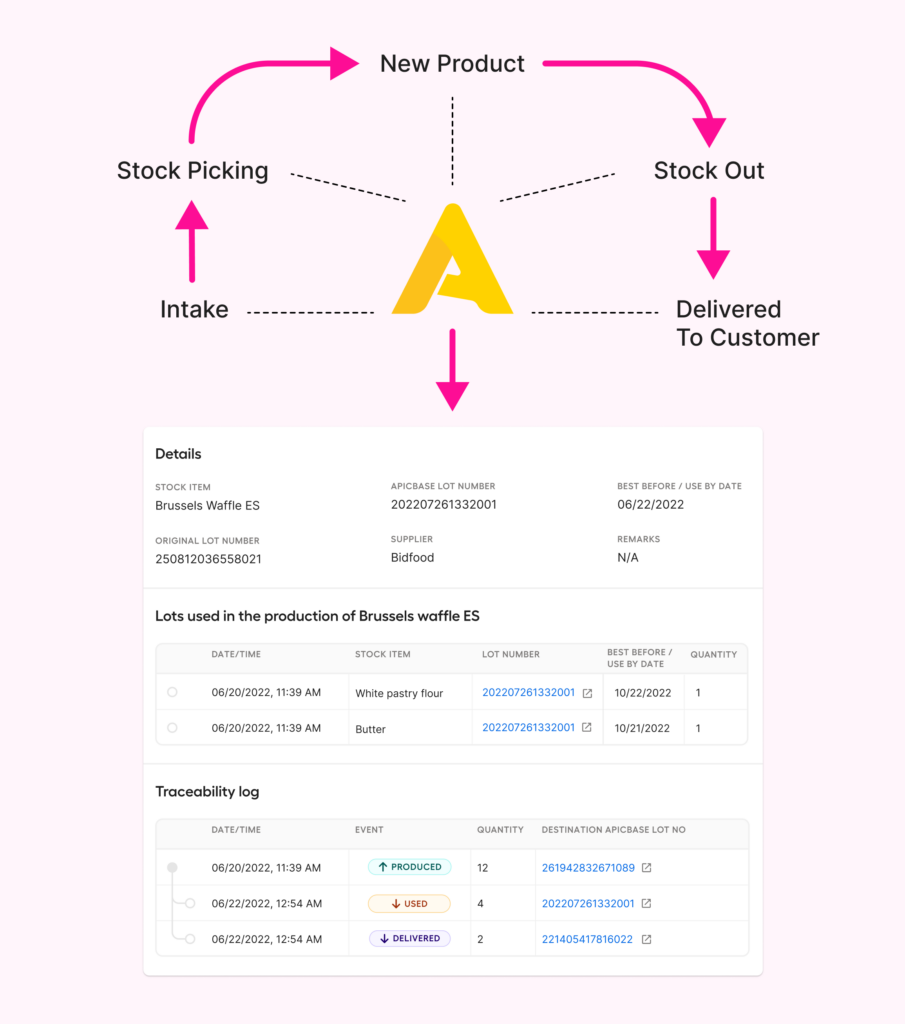
Let’s put the theory into practice with an example.
When you use Apicbase, this is the standard traceability process of your food products.
- Raw materials come in.
- Using a high-speed thermal printer, you print a unique lot-code and scan it to log the product (Intake).
- When you’re about to start producing food – say spaghetti sauce – you scan the lot codes of the ingredients you’re using (‘Stock picking’).
- You prepare the spaghetti sauce and divide it into ten portions. Each portion gets a label with a new lot code specific to that batch.
- You deliver the sauce to f.e. five customers. Scan the labels again, and assign them to each end customer.
Now you know exactly which ingredients were used to make the (semi-)finished product and to who it was distributed.
In addition, Apicbase enables you to register waste events. Logging waste ensures a closed traceability data loop. For example, if a batch is dropped on the floor, you need to document the wasted product to account for the ingredients or products lost in case of a recall.
Apicbase also provides:
- nutritional value information,
- a Nutri-Score, and
- allergen data for every product.
Traceability Scan App
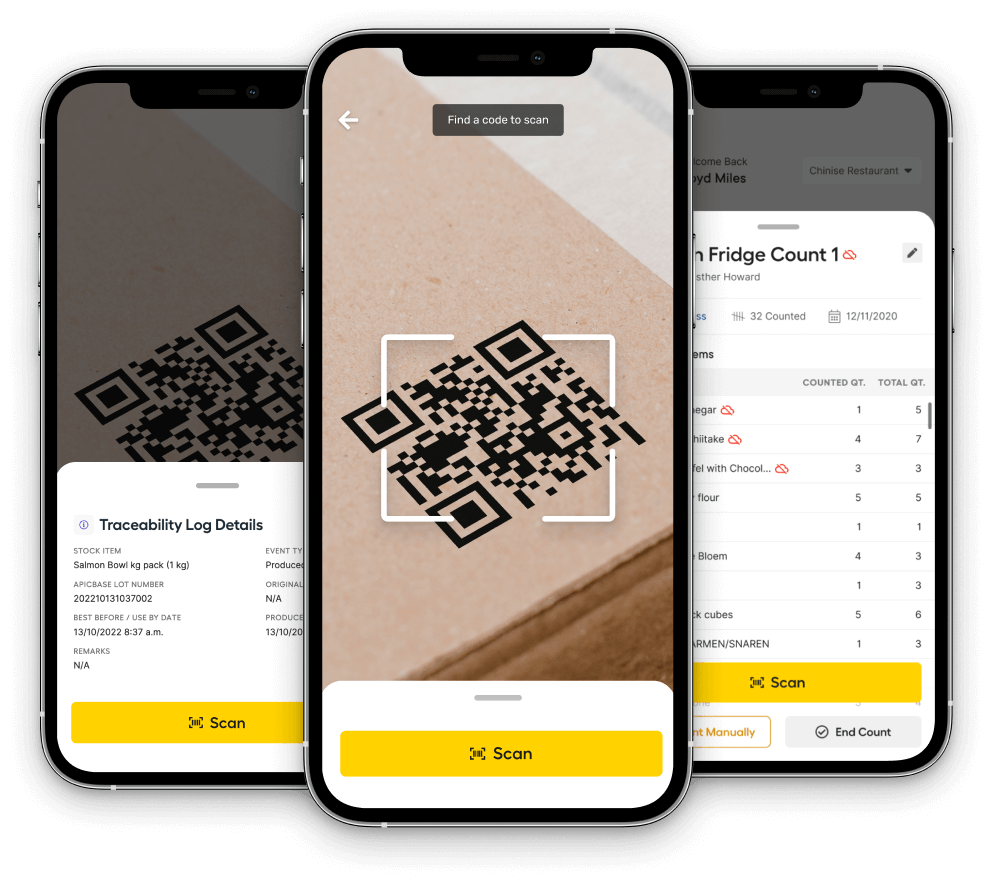
Keep your employees happy. Free your kitchen staff from manual traceability actions. The scanner app automatically feeds all relevant data into Apicbase. Traceability is integrated with the inventory management and production planning modules, making manual stock updates redundant, saving your team time and ruling out errors (app available in 2023).
What are the food traceability regulations in your country?
Now that you know what food traceability is, why it matters, and how technology can help your company comply with legislation, let’s look at the regulations in Europe, the UK, and the US.
Food traceability regulations in the EU
In the EU, F&B operators must follow a comprehensive traceability system to protect consumers from contamination risks in the supply chain. The traceability requirements are established in the General Food Law Regulation, which aims to facilitate food recalls and provide consumers with accurate food information.
For more details and tips to put the necessary traceability measures into practice, you can read the following documents:
- Factsheet on Traceability
- Leaflet on Key Obligations of Food and Feed Business Operators
- Document on the implementation of the law
Food traceability regulations in the UK
In the wake of Brexit, Northern Ireland still follows the EU’s food and beverage traceability regulations. However, Great Britain, Scotland, and Wales have adopted the traceability requirements set by the Food Standard Agency (FSA).
The FSA’s quick reference guide details these requirements and offers practical tips and guidance for F&B companies, helping them to develop a food traceability system and food recall procedures.
Food traceability regulations in the US
The Bioterrorism Act of 2002 laid out the first traceability requirements for food-service operators in the US. Since then, the growing emphasis on food safety led to the addition of Section 204, which provides operators with traceability goals to mitigate risks.
The Food and Drug Administration (FDA) recently published the New Era for Smarter Food Safety. This document promotes adopting technology to facilitate and enhance food traceability in the F&B industry.
Finally, a new US food traceability rule will become official in November 2022. Food production companies will have to keep detailed records of 16 high-risk food products, including their origins, movement throughout the supply chain, and shipping. You can find more information about the products and what’s expected of you here.
Types of traceability
Accurate food tracing starts with data annotation and consistent package labelling. Maintaining traceability data is crucial when you receive deliveries, but it’s equally vital when taking an item from your inventory for production or putting new (semi-)finished products back in stock.
Let’s break down the different types of food traceability your production kitchen should manage.
Internal traceability
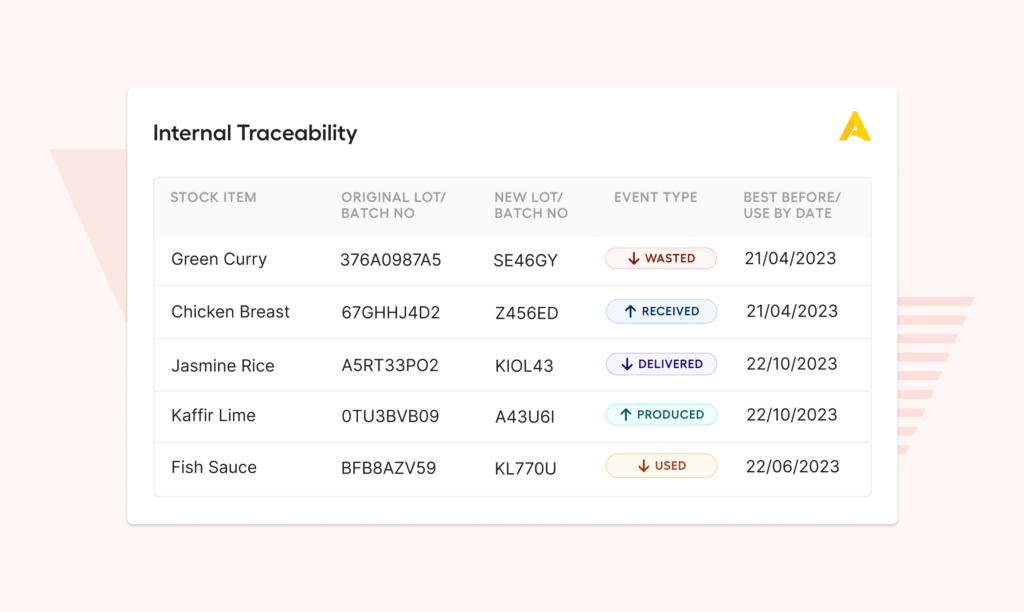
Internal traceability refers to the ability to link the identity of raw materials to that of finished products. All new products made with processed, combined, reconfigured or repackaged materials must have a unique product identifier.
As the name suggests, internal traceability is tracking products and keeping records within your production unit. It is essential for tracking inventory and purchasing. Internal traceability also helps you improve productivity and reduce costs (if you do it right).
To maintain internal traceability, you must record the link between each new product and its original raw material input – including seasoning, marinades, etc.
External traceability

External traceability, also known as chain traceability, is about product tracing beyond your company. Instead, this type of traceability requires information to be shared across the entire supply chain. That info extends from the original supplier to the end customer.
Backward and forward traceability are examples of external traceability.
Backward traceability
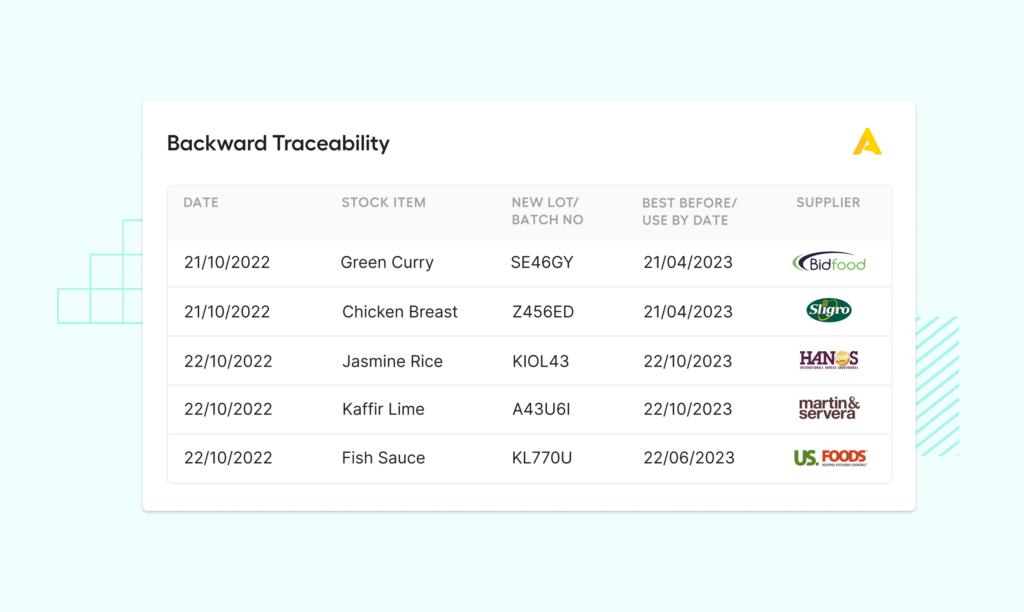
Backward traceability refers to your ability to trace an end product (or semi-finished product) back to its ingredients. That also entails tracking all the different batches of meal components received from suppliers and establishing where the remainder of those ingredients went.
To be able to trace back your ingredients, you legally need to maintain at least the following info for each batch:
- the name of the supplier;
- the date you received the batch;
- the batch code or lot number;
- the use by or best before date.
Forward traceability
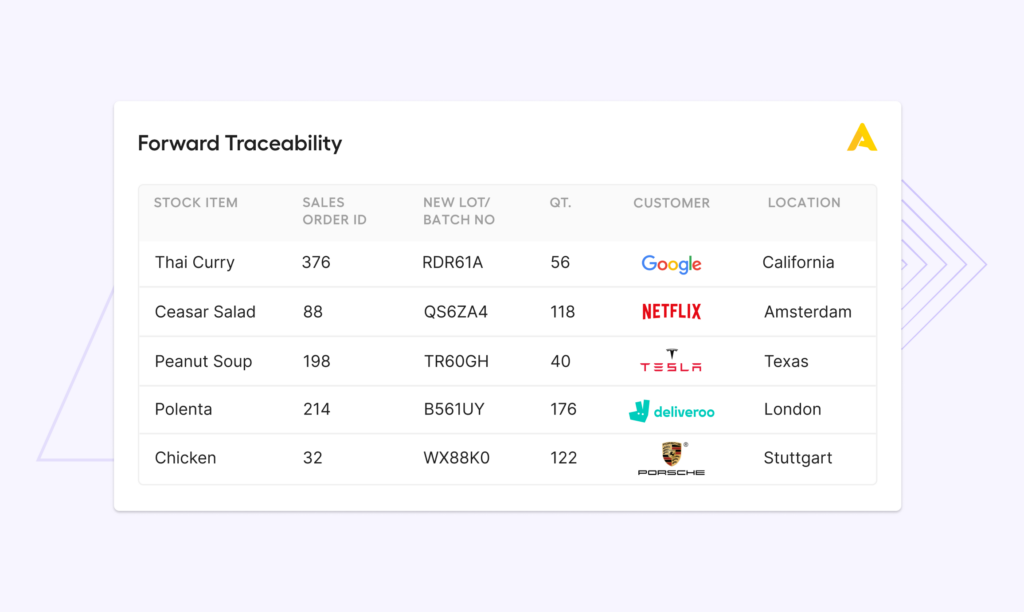
Forward traceability, also known as customer traceability, is your ability to account for all the end products made with any batch of ingredients. In other words, you can trace which finished food product batches you distributed and delivered to which customers.
This type of traceability is typically part of a restaurant’s ordering and dispatch system and includes data like:
- the customer’s name and location;
- the sales order’s identification number;
- delivered quantities;
- product names;
- batch codes.
Conclusion: Take Steps To Guarantee The Traceability Of Your Food Products At All Times
The larger your food business and production kitchen, the more difficult it becomes to track raw materials throughout the entire intake, storage, production, and delivery process.
Food and beverage companies are responsible for serving safe food. Therefore, they must comply with local legislation to trace every product across the supply chain – from the product’s origin to the end consumer.
Guaranteeing food traceability isn’t just about handling food safety risks. It also helps operators improve their inventory management and purchasing processes and meet consumer demand for complete food transparency.
Getting traceability right will keep your employees happy, enhance your reputation as a trusted brand, and potentially save your bottom line in case of a recall.
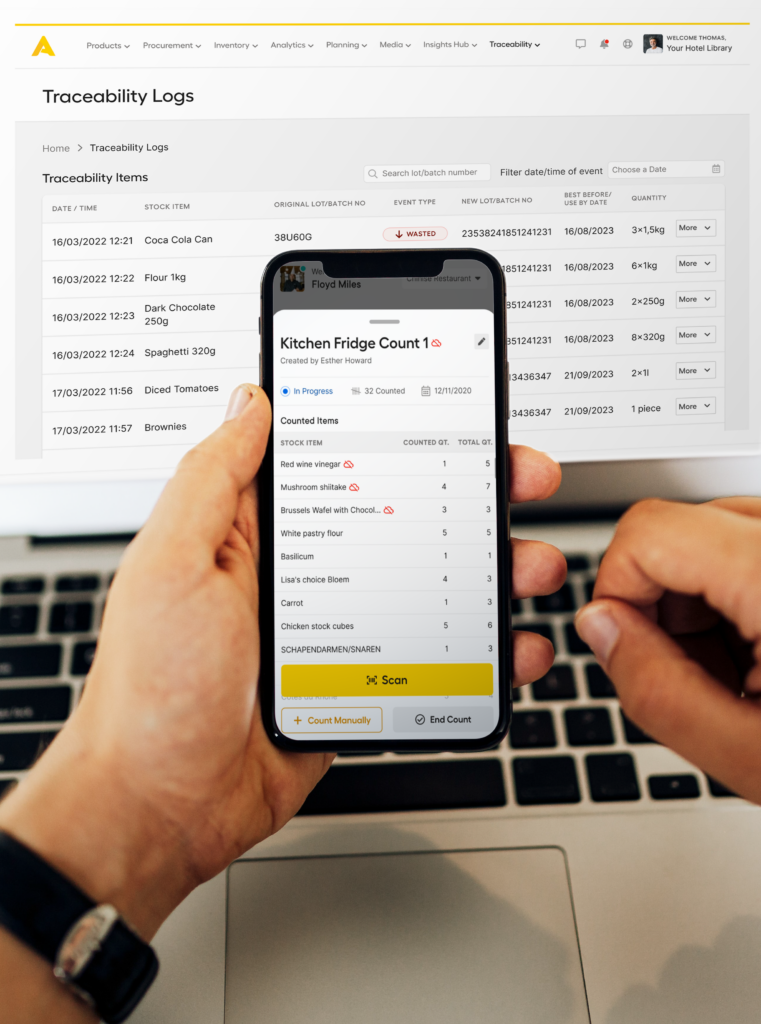
Automate Food Traceability With Apicbase
Apicbase helps you comply with traceability regulations without increasing your employees’ workload. The end-to-end food traceability module eliminates human error, saves FTEs and helps avoid high recall costs for food production kitchens.
Explore how the Apicbase platform can help you double down on food traceability.
